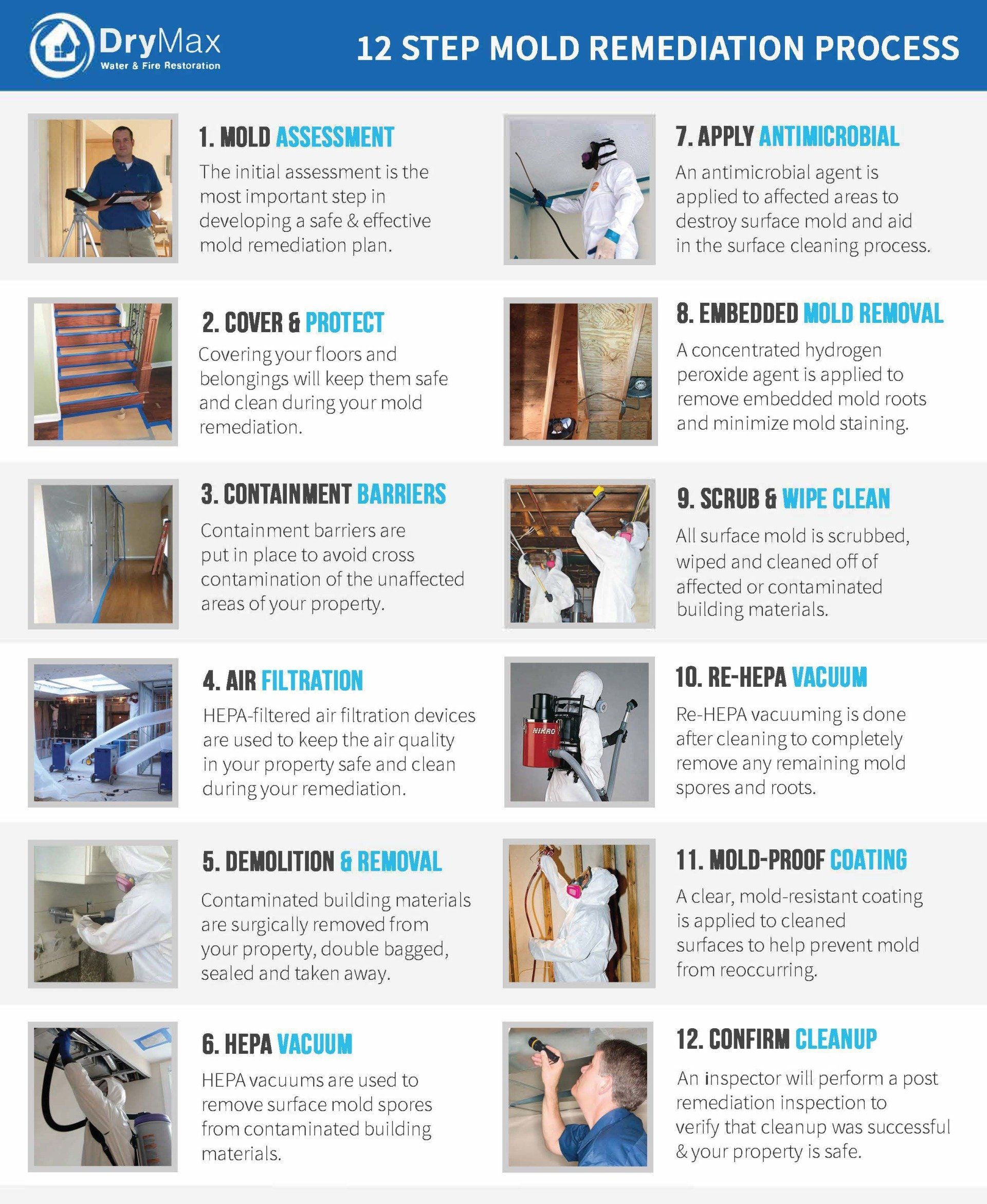Mold Remediation & Testing in Opelousas, LA
Mold Inspection, Mold Testing & Mold Removal Professionals Opelousas Louisiana
Mold spores are microscopic when airborne and can spread to contaminate virtually any surface. All it takes is a bit of moisture and time -- then you could end up with a major mold problem.
Whether it is moisture from a leak, flood, humidity or other water source, the moisture source needs to be repaired and the mold removed. Mold and moisture can leave Opelousas property owners with widespread property damage like damaged building materials, compromised structural integrity, contaminated personal belongings and more. Exposure to excess indoor mold growth could also mean potential health implications, depending on the individual. If you think you might have a mold and moisture problem in a building in Opelousas Louisiana, you should contact the DryMax Team today.
Mold can hide in hard to reach areas like within wall voids and behind build materials. A mold inspection can uncover hidden mold growth. Call the DryMax team in Opelousas Louisiana today (337)-366-0900
GET HELP NOW
Send us your details and one of our Mold Remediation & Inspection Experts will get right back to you.
Mold in Opelousas?
Call or Click For Fast Response!
Licensed & Insured Mold Remediation Company in Opelousas LA?
Deeply embedded mold roots are difficult to remove without the right equipment, knowledge and experience. DIY mold removal, without the help of a professional, is often ineffective and can even make the situation worse. Once mold is disturbed, the airborne mold spores can cross-contaminate previously clean, unaffected areas. Mistreatment of mold can have negative side effects like more mold growth, more damage and more expensive repairs. If you are in need of mold removal services, contact a professional mold remediation company in Opelousas LA.
DryMax's specially trained mold removal technicians on Opelousas
are trained to safely and effectively remove mold, so you and your family can return to clean, mold-free environment. We follow specific mold remediation procedures and strict safety protocols. We use the most advanced equipment, methods and products to ensure succuessful restoration to clean, mold-free conditions. Following a successful mold remediation, it is of utmost importance that our clients implement the necessary moisture control and mold preventatives. The moisture source must be removed in order to maintain mold-free conditions following remediation. Our remediation team will provide guidance on what to do following remediation to maintain your mold-free property.
Professional Mold Inspection With Mold Testing Opelousas Louisiana
Airborne fungal spores are microscopic and can spread without notice. Once spores are introduced with enough water, spores will germinate and develop into a widespread contamination. When there are suspicions of mold, the first step is to have the property inspected to diagnose the problem. If an inspector confirms a mold problem, the mold needs to be actively removed by a mold remediation professional and the moisture source needs to be repaired.
DryMax inspectors use the most advanced investigative tools and assessment methods to gather as much information as possible regarding the conditions of your areas of concern. If we uncover a mold problem, that information will be valuable in the development of our mold remediation protocol report. We will always report our findings in a respectful, professional and honest manner.
DryMax’s mold inspection process includes the following:
- Visual assessment of the inside and outside to identify visible mold patterns and signs of moisture that could cause and sustain fungal growth.
- Moisture mapping with moisture meters and thermal imaging cameras to identify moisture patterns and isolate areas of significant, mold-sustaining moisture buildup.
- Collection of air and/or surface samples for laboratory analysis to see if there is an elevated mold presence, what species are present, and how much mold is present.
- Presentation of findings in a clear, concise and honest report detailing all findings, conclusions and recommendations.
If you are in need of a mold inspection and mold testing in Opelousas Louisiana, call today to schedule an appointment with an inspector -- 337-366-0900
Even seemingly dry surfaces could have moisture locked within its pores that can cause and support mold. DryMax's mold inspectors have the training and equipment to inspect for mold and moisture. Call today to learn more.
DryMax’s Professional Mold Remediation Process
- Containment: Plastic chambers isolate areas of concern to stop cross-contamination.
- Cover & Protect: Floors & belongings will be covered & protected while we work.
- Air Filtration: HEPA-filtered air filtration devices maintain safe indoor air quality.
- Demolition & Removal: Contaminated building materials will be removed for disposal.
- HEPA Vacuum: HEPA-vacuums are used to remove surface spores from materials.
- Antimicrobial: An antimicrobial agent will be applied to destroy surface mold.
- Mold Roots: Oxidative technology is used to remove deeply embedded mold roots.
- Scrub & Wipe Clean: All surfaces are scrubbed and wiped clean.
- Re-HEPA Vacuum: Second round of HEPA-vacuuming ensures removal of all mold.
- Mold-Proof Coating: Mold-resistant coating is applied to prevent future regrowth.
DryMax's Mold Removal & Mold Inspection Team Opelousas LA
DryMax is fully licensed and insured to provide mold services in Opelousas LA and throughout the Acadiana Area. We stand by the quality of our work and will never cut corners to get the job done. Our team is fully trained to provide mold removal, mold testing and
mold inspection services in Opelousas LA. We work hard to ensure that our work is always at its highest quality. For years, Acadiana communities have trusted us with their properties, and we work hard to maintain that trust.


